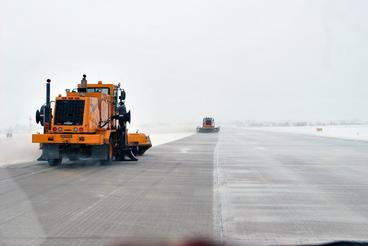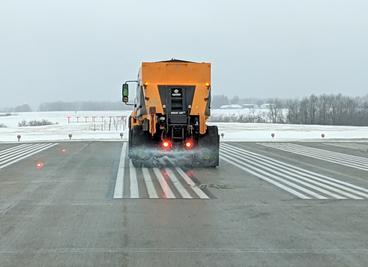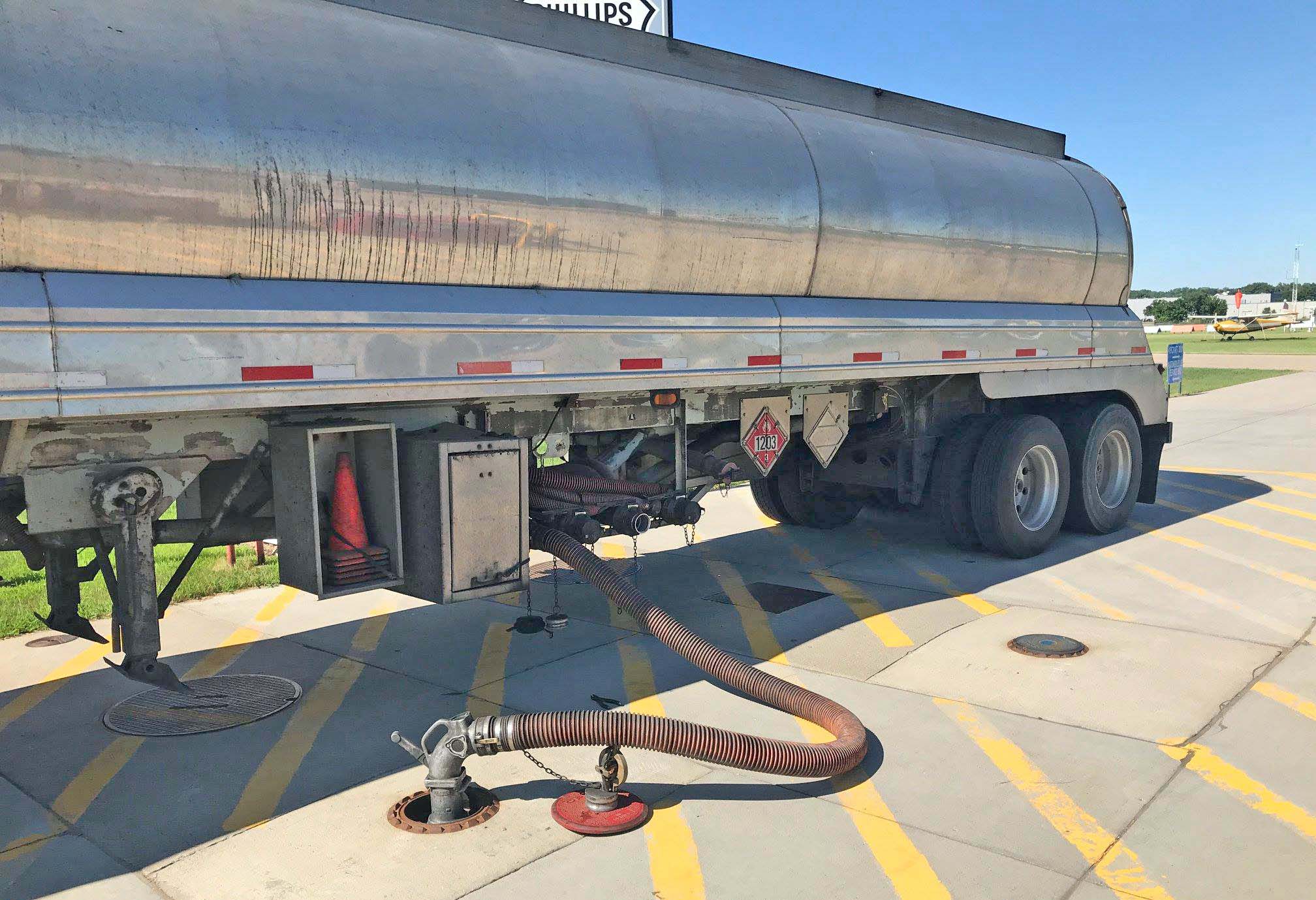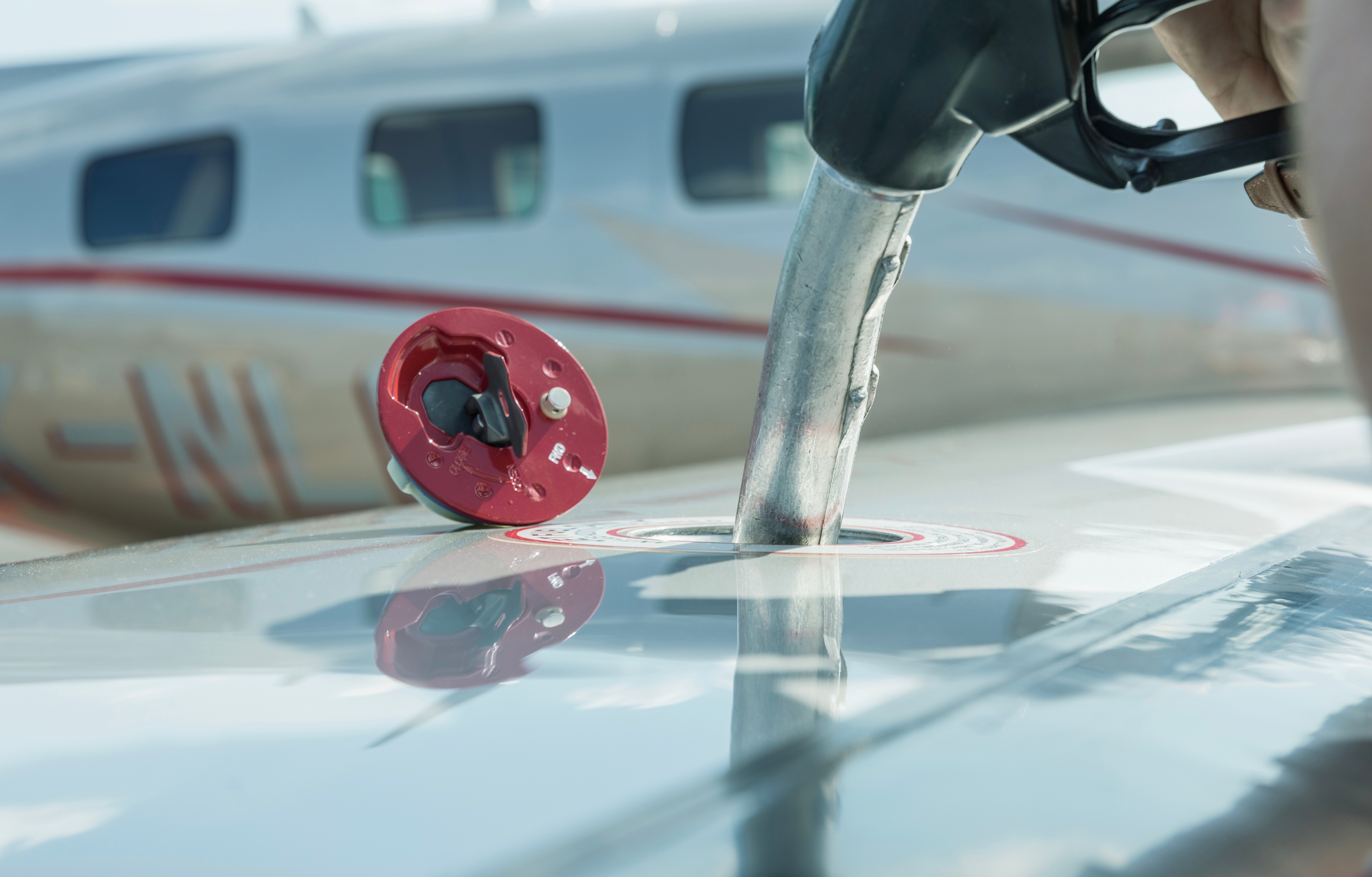
Despite the occasional polar vortex, Minnesota’s climate is warming. According to the Minnesota Department of Natural Resources, the state warmed by 2.9 degrees F between 1895 and 2017. And most of Minnesota’s observed warming has been when it’s coolest: since 1970, winter has warmed 13 times faster than summer. One result of warmer winters is more ice—in addition to, or instead of, snow events. For Minnesota airports, especially those lacking experience in dealing with ice, that can mean more challenges in maintaining safe operating conditions.
As deputy director of Rochester International Airport, Kurt Claussen oversees most airport operations. Having been with the airport for 28 years, he’s dealt with plenty of winter weather. Over the last three years, however, he says the airport is seeing more frequent—and more significant—ice events.
In this issue of Briefings, Claussen shares what he’s learned.
As one might expect, handling snow and ice for an airport is much different than for roads. “On a highway, a half-inch of snow isn’t a big deal, but that’s not true for a runway,” Claussen says. Any snow or ice can cause hazardous conditions that could contribute to aircraft incidents and accidents. And more treatments are available for treating highway snow and ice than for airports. Airports have a limited selection because any treatments have to be FAA-approved. For example, chemicals from the chloride family, which are highly effective on roads, are corrosive to aircraft.
The airport has 15 operations staff members who are cross-trained in maintenance and firefighting. Because Rochester has air carrier service, the FAA requires certain equipment. This includes two large snow blowers and several large plows, but the airport’s primary tools are its big brooms, with heads about 4 feet tall and 18 feet wide. “Anything you can take off mechanically is better than taking it off chemically, especially in warmer weather,” Claussen says. “The more you plow surfaces, [the more] you push snow down into the cracks, and that can make it more slippery. So we’re brooming more. That gives us better friction and traction.”
According to the FAA, the type of broom used to remove a layer of ice is important, since in some cases the broom may actually “polish” the ice, reducing traction. Steel bristles are better than poly bristles since one cuts the ice surface while the other flips snow.
A primary goal for airport operations is prevention—preventing a bond from occurring between ice and the pavement is always preferred over removing bonded ice once it has formed. Besides equipment, the Rochester airport relies on chemical anti-icers and deicers. Liquid chemical (Cryotech E36 liquid) is the airport’s first line of defense, and is used more frequently than solid product. The airport takes a proactive approach to pre-apply liquid as an anti-icer before freezing rain to prevent ice from forming and bonding when it can. In situations where ice has already formed, crews use solid pellets. Claussen explains that a pellet product will make holes in the ice layer that a liquid, applied afterwards, can seep into, thus more effectively melting it.
FAA-approved liquid deicing and anti-icing products include glycol-based fluids, potassium acetate base, and potassium formate-based fluids; approved solid compounds include airside urea, sodium formate, and sodium acetate. Application rates for a specific product are based on manufacturer recommendations. While fluid and solid specifications cover technical requirements for deicing and anti-icing products, they do not address the compatibility issue of combining products during operations, so airport operators should ask manufacturers about the proper use of concurrently applying multiple products.

To respond appropriately to a winter storm event, airport staff need accurate and timely weather information. Reliable forecasting will improve effectiveness and efficiency of an airport’s operations and save costs on chemical use and efforts. These days, weather information is readily available on the Internet. Rochester uses several different sources, including the National Weather Service Office in La Crosse, WI, which allows access to live help 24-7 if they have questions about what they’re seeing. “Radar is not an exact science, especially concerning rain, freezing rain, snow, and sleet,” Claussen says.
And because of wind, pavement temperature, air temperature, air moisture, and myriad other factors, no two weather events are ever the same. “There are so many variables,” he notes.
For example, he’s learned over the years that the weather service will call an event “freezing rain” only when the air temperature is below freezing and it’s raining. “But for us, if it’s 33 degrees and raining, and the pavement temp is 18 degrees, the pavement is cold enough for the water to freeze—it’s not going to run off,” he says. “I thought we had some pretty significant events because of the pavement temperature that weren’t officially called freezing rain. But it caused the same problems.”
In October 2016, the FAA implemented a new process, developed with input from all industry stakeholders for assessing and reporting airport conditions called the Runway Condition Assessment Matrix. “In the past, everything was friction-based, [but] now it’s more contaminant-based,” Claussen says. Most airports, including Rochester, still measure friction, but no longer report that information as part of the runway conditions under the new system. “We still find the friction measurement very useful from a trend analysis standpoint,” Claussen says. He explains that minute changes in those numbers are a helpful indicator of what is happening with the pavement surface, and tracking those changes allows the airport to react and respond before the pavement condition reaches levels that will impact operations—allowing a sort of “grace period for our reaction,” he says.
Although ice has always been a factor for the Rochester airport, it may become a new and increasingly common challenge for other airports in the state. “It seems like the line has kind of crept [north]. We’d always gotten a fair amount [of ice], but more northern Minnesota airports haven’t.” Those airports may lack the equipment for dealing with it. “It’s expensive,” Claussen says. “Maybe we come up with some type of cooperative purchase. Maybe a tank and sprayer, or a truck for putting down solid deicer.” Claussen says staff at these airports may not have much experience dealing with ice, either. Snow and ice control guidance from agencies such as the ACRP is more general, he adds, “but every airport’s needs are different.” If a smaller airport can only choose one product, Claussen would recommend a solid deicer over a liquid. The solid may work better to remove ice that has formed overnight—which may be a more common occurrence for small airports that aren’t operating 24 hours a day.
Claussen emphasizes that he’s no expert; rather, he learns something from every event. The airport staff relies on best management practices gained from experience, meeting every week and evaluating past events. “What I emphasize when we talk about these events is that we’re not critical of what was done,” he says. “We want staff to be open and honest and not defensive. We just ask, ‘If we could do this over again, what might we do differently?’”
Additional sources consulted:
- Federal Aviation Administration AC 150/5200-30D, Airport Field Condition Assessments and Winter Operations Safety.
- Minnesota Department of Resources website “Climate Trends”


